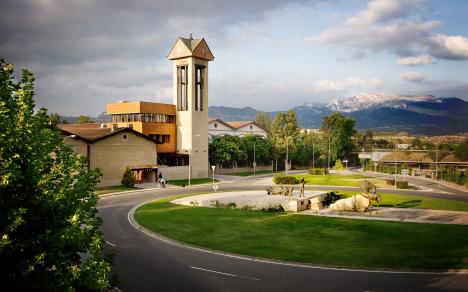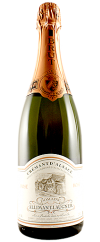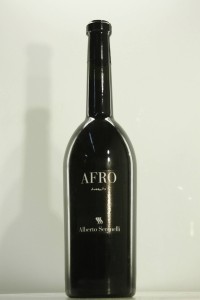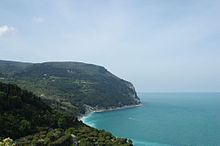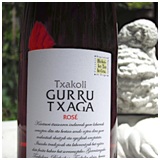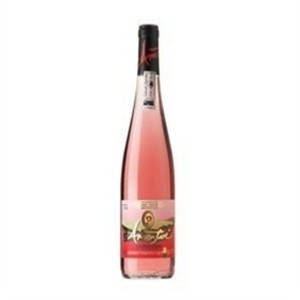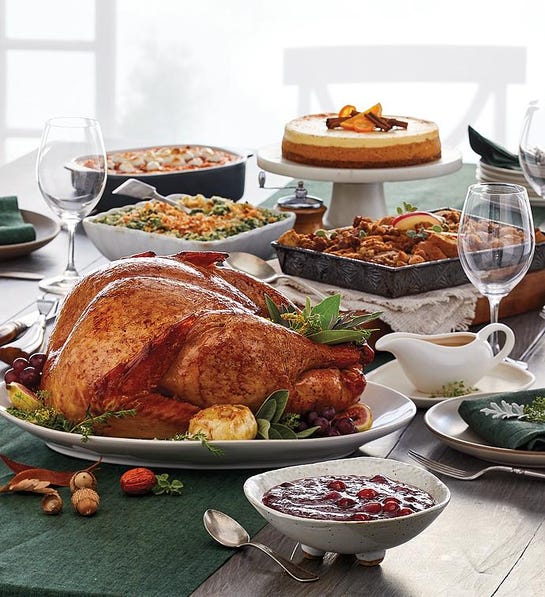 Holiday Greetings!
Holiday Greetings!
I wanted to steer you towards delicious wines, that will complement and not fight that tricky Thanksgiving table. Leave the fighting for after-dinner politics, or a football game.
Rich Turkey … smothered in equally rich gravy, with savory stuffing, buttery & rich potatoes (note- there is a common thread here), sweet cranberries, green beans and whatever Aunt Karen does to them…that food array just despises powerful, tannic, show-off, trophy wines. Those big, tannic wines don’t work with this meal, so just save them until after the meal! I mean, you wouldn’t smoke a cigar DURING dinner either…they just don’t work with the food.
There are many white wines that would work beautifully with that dinner, but most of your guests may reach for the reds. On the white side, Gewurztraminer would work beautifully, as would a Chenin Blanc blend from South Africa or Australia, or a Savennières from the Loire. And, here is where a great white Burgundy or New World Chardonnay will be fabulous company depending on your tastes. Those slightly higher acid Chardonnay will be the better pairing for picky wine people, but a Buttery Chardonnay will be appreciated by a broader audience…and we sure have a lot to choose from.
If you want to serve Red Wine, choose medium-bodied, lower tannin, moderate acid, but fruit-plush wines, which we’ll discuss…or a sparkler. Most Americans are now drinking Pinot Noir this time of the year. It will be very easy to find, so you won’t need a lot of help. Plush New World Pinot (California, Oregon, New Zealand etc..) will show off lush fruitiness and lower tannins and work beautifully with the meal. Any wine Seller can probably recommend a dozen solid values, so I am going to look beyond Pinot Noir, and recommend some surprises for your guests.
Rose Champagne or Blanc de Noirs (Not rose colored, as there is no skin contact with the juices, but made from Pinot grapes), or any of the great Methode Champenois Rose sparklers from around the globe are fun, pair beautifully with a broad range of foods, and can be seriously good wines, and make the Holiday feel even more special!
 Great Sparkling wines are coming out of California, Oregon, New Mexico, Michigan, New York, and are starting to be produced in the emerging wine areas too. I have even enjoyed great Sparklers from Richard G Peterson, made in California with Pinot grapes grown from cuttings imported from Wrotham in Kent, England, originally planted by the Romans…if you see any bottles, pounce and enjoy!!! (His daughter, cult winemaker Heidi Peterson Barrett learned a thing or two about winemaking around him…)
Great Sparkling wines are coming out of California, Oregon, New Mexico, Michigan, New York, and are starting to be produced in the emerging wine areas too. I have even enjoyed great Sparklers from Richard G Peterson, made in California with Pinot grapes grown from cuttings imported from Wrotham in Kent, England, originally planted by the Romans…if you see any bottles, pounce and enjoy!!! (His daughter, cult winemaker Heidi Peterson Barrett learned a thing or two about winemaking around him…)
I get excited opening Camille Saves , Egly-Ouriet, Pierre Peters, Guy Larmandier, Pierre Bertrand, Andre Jacquart, Chartogne-Taillet, Gosset-Brabant, Frédéric Savart, Duval-Leroy…but, if they aren’t readily available, and you are watching the budget too, grab a couple of bottles of Chandon Rose from California, a nice Cremant Rose from Alsace or Bourgogne, or a Rose Prosecco…They really do work with everything and should cost you under $20.
It’s a great time to choose something different with fun, unusual non-Champagne style sparklers like a good Italian Lambrusco or Brachetto, which are medium-bodied reds, with bubbles! Today’s well-made Lambrusco and Brachetto are a far cry from the mass-imported Riunite (“Riunite on Ice, Tastes Nice” was the TV ad tag line) which made Lambrusco a punch line to jokes! A nice Lambrusco will cost about $20, Brachetto will range from $18 to $35 (Rinaldini, Cantina della Volta, Chiarli, and Vignetto Saetti are solid producers). They will be fruit forward with spice, slightly sweet, but with good acidity and complex flavors. It’s a crowd pleaser with the Holiday menu.
Don’t be afraid to try a Sparkling Shiraz which will provide deeper, dark fruit flavors and more wine body with a little grip, while the sparkles make it lighter on the palate…like dancing in your mouth! It’s nice to have a wine you can be wine geeky about and appreciate for its unique fit, while your younger relatives and grandparents appreciate its more obvious qualities…rich fruit flavor, velvety mouth feel…and fizzzzzz! Paringa, The Chook, Mollydooker, Jip Jip Rocks, Bleasdale, Teusner, Mr. Riggs, all deliver great value and flavor.
 If you want to show off, pick a beautiful red wine that is unknown to most Americans. Sicily has some stunning wines that show the velvety, delicate character of great Burgundy but with the plusher fruit levels of those new world Pinot. I love Palari’s Faro Red blend that over-delivers for the price, and several other producers make stunning wines with the Nerello Mascelese grape that aren’t too rich or tannic…look for “Etna Rosso”.
If you want to show off, pick a beautiful red wine that is unknown to most Americans. Sicily has some stunning wines that show the velvety, delicate character of great Burgundy but with the plusher fruit levels of those new world Pinot. I love Palari’s Faro Red blend that over-delivers for the price, and several other producers make stunning wines with the Nerello Mascelese grape that aren’t too rich or tannic…look for “Etna Rosso”.
Well-made, lower alcohol Zinfandels will show off rich fruit and have lower tannins, and work better for your meal than some monster Zins. California has some gems, but if your suppliers are limited, you can’t go wrong with Ridge’s “Three Valleys” or “Geyserville”, zinfandel driven red blends.
Grenache-Syrah/Shiraz-Mourvedre Blends will work similarly whether you find them around Paso Robles or Australia. Just search out the easier drinking, less powerful versions of these rich wines, and they will be loved by all. This is not the time to pull out that cult wine that received a 100 point score…wait!
 Personally, I love these blends, and I’m bringing 3 Liter bottles from L’Aventure in Paso Robles, of their “Optimus” and their “Cote a Cote” Red Blends. Owner/winemaker Stephan Asseo, crafts his French inspired beauties with Central Coast grapes and no rules on blending to hold him back from his vision.
Personally, I love these blends, and I’m bringing 3 Liter bottles from L’Aventure in Paso Robles, of their “Optimus” and their “Cote a Cote” Red Blends. Owner/winemaker Stephan Asseo, crafts his French inspired beauties with Central Coast grapes and no rules on blending to hold him back from his vision.
Optimus is his younger-vine Bordeaux-inspired blend, made to drink beautifully with less cellaring (56% Syrah, 32% Cabernet Sauvignon, 12% Petit Verdot). His “Cote a Cote”, is a Chateauneuf-inspired gem that is predominately Grenache. (a 51% Grenache, 26% Mourvedre, 23% Syrah blend).
Incidentally, its also a good time to pour food-friendly wines from around your home.
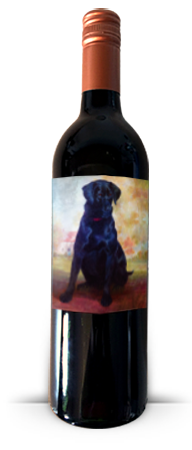 In Arizona, Callaghan Vineyards in Elgin, Caduceus Cellars in Jerome, Laramita Cellars in Willcox, and Dos Cabezas WineWorks out of Sonoita, Page Spring Cellars and Pillsbury, are among the producers making very good, but relatively small production, food-friendly reds and whites and even Sparkling Whites and Rose!
In Arizona, Callaghan Vineyards in Elgin, Caduceus Cellars in Jerome, Laramita Cellars in Willcox, and Dos Cabezas WineWorks out of Sonoita, Page Spring Cellars and Pillsbury, are among the producers making very good, but relatively small production, food-friendly reds and whites and even Sparkling Whites and Rose!
A nice Grenache from Spain, or a (non-trophy) Syrah from California’s Central Coast or Napa/Sonoma (great fruit, lower tannin, softer….) will be crowd pleasers. Search out Qupe, Alban, Tablas Creek, Saxum, Linne Calodo, Melville, McPrice Myers, and that’s just a small slice of great Syrah.
If you want to have a Name Cabernet, pick one that’s generally softer and less tannic. Silver Oak’s Alexander Valley is going to work better than the more tannic “Napa”. Caymus Cabernet works better than their powerful age-worthy “Special Select”. Is this the best pairing for a wine geek…probably not, but for a Cab lover…why not!
And for some of us who rush through the dinner, but relax afterwards, talking with Family and friends and catching up…now is the time to enjoy that Port, trophy Red or other big-flavored beverage of choice.
While I was thinking about less expensive wines that deliver a great “Big Wine” experience, but work with the Holiday spread, I ran across an Old friend at Costco, and then saw her at Total Wine…Boekenhoutskloof’s, “The Chocolate Block”!!!! Such a lovely buy:
Boekenhoutskloof’s, “The Chocolate Block”

I first tasted Boekenhoutskloof’s “The Wolftrap Red” and “The Chocolate Block” Red Wine in San Francisco before they had distribution in SoCal. The Wolftrap Red, was a great bargain wine, and the Chocolate Block was a lush complex Red for under or around $30…and they still are.
Established in 1776, in the furthest corner of the beautiful Franschhoek Valley, they gained recognition, and strong demand for these wines since 2000. I was able to get a first shipment of WolfTrap and The Chocolate Block in SoCal for my store, Malibu Village Wines, and it was a hit. The Wolftrap took it’s name from an actual Wolftrap found on the farm, dating back to its founding when the region was wild and wolves were a feared predator.
The Chocolate Block was originally named not only for the chocolate nuances that punctuate it, but also for a block in the vineyard where the grapes were grown. Today, the wine has become so popular world-wide that production has grown exponentially and the Vineyard sources have multiplied.
The spectacularly well-made 2019 is juicy enough to work with the sweet and savory flavors in the Thanksgiving Dinner spread, and has just enough tannins to balance the jammy fruit and please lovers of big, powerful reds.
Chocolate Block shows off the beautiful Syrah of the Vintage and like the “Blocks”’ before it, gets its multiple flavors, plush mouthfeel, character and charm from the combination of grapes used.
The wine immediately shows off flavors of dark berry pie with Holiday spice notes. Jammy, juicy dark fruit notes of Black Berries, Plum, and a slight but pleasant hint of prune, combine with the spicy, peppery accents. After you swirl, sniff, roll it around your mouth and swallow and contemplate what you just tasted, the finish notes start to arrive and surprise you…as they bring the characteristic dusty cocoa notes that almost always accompany this wine.
Blend: 71% Syrah, 11% Grenache, 9% Cinsault, 8% Cabernet Sauvignon, 1% Viognier
Winemaker Notes
Vintage 2019 was preceded by a very dry growing season ensuing in a record-low harvest yield. The crush was down 2% from 2018 tonnages. The optimistic retrospect of these conditions resulted in smaller, more concentrated berries due to their higher pulp-to-juice-ratio. These circumstances, along with green harvesting due to uneven bud-break, were encouraging for the making of wines with great complexity. The Swartland experienced moderate temperatures during December ’18 and January ’19 with the first heatwaves impacting the appellation during February. The picking window for The Chocolate Block was a mere two-week period. Fortunately, our even greater reliance on our vineyards from Porseleinberg and Goldmine farms made it a manageable fortnight in terms of fruit-picking and refrigerated transport logistics.
By early accounts, 2019 is proving to be another good vintage for Syrah with pronounced black fruit flavours and a classic black olive nuance. The predominant variety (71%) displays a beautiful inkiness in the glass. The Grenache vineyards on Porseleinberg are becoming well-established, and this variety is undoubtedly the bright, perfumed star of the blend revealing an old, Châteauneuf-du-Pape-like charm. Old vine Cinsault remains an unheralded gem which effortlessly knits the wine together and establishes a refined elegance. At merely eight percent of this finite variety grown within the appellation, Cabernet Sauvignon is essential in providing structure and grip to the blend. Syrah and Cinsault were matured in a combination of seasoned 2,500L French oak foudres and barriques. Grenache was matured in seasoned 600L demi-muids. Cabernet Sauvignon was the only component exposed to new French oak barrique. The elevage ranged between 13 & 16 months, dependant on component and vineyard parcel. 2414 barriques were selected for our 2019 vintage.
The nose is dark, intense and brooding with aromas of black cherries, cardamom, sweet tobacco, espresso and subtle whiffs of perfume. The dark fruit character of the nose follows through onto an exceptionally complex, juicy palate with gentle nuances of ripe plums, violets, black olives, cloves, and liquorice. The mid-palate is focused, lithe and elegant with very fine, cocoa powdery tannins. The wine is medium bodied, very balanced with an earthy, layered character, covering the entire spectrum of berry fruit – from tart red plums to rich blue and black berries. The finish is svelte, clean and dry, peppery and lingering, with hints of dried cranberry, tar, graphite and smoke. Blend: 71% Syrah, 11% Grenache, 9% Cinsault, 8% Cabernet Sauvignon, 1% Viognier
Critical Acclaim
RP90
Robert Parker’s Wine Advocate
Made from a blend of 71% Syrah, 11% Grenache, 9% Cinsault, 8% Cabernet Sauvignon and 1% Viognier, the 2019 Chocolate Block begins with a broad, juicy nose of spiced plum, blackberry compote, fresh cracked black peppercorn, dusty purple flowers and hints of baking spices. Medium to full-bodied, the wine initially expresses fresh, ripe and juicy dark fruit tones with an undercurrent of black and red spice before firm tannins grip the gumline. The wine concludes with a dusty and spicy finish and a lingering tannic edge. The wine spent 13 to 16 months in barrels before being blended. Rating: 90+

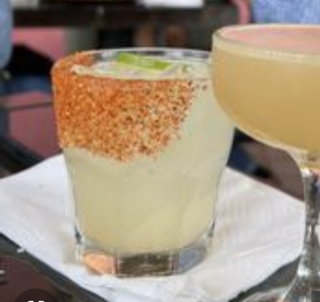 BACANORA, the spirit from just south of the Border.
BACANORA, the spirit from just south of the Border.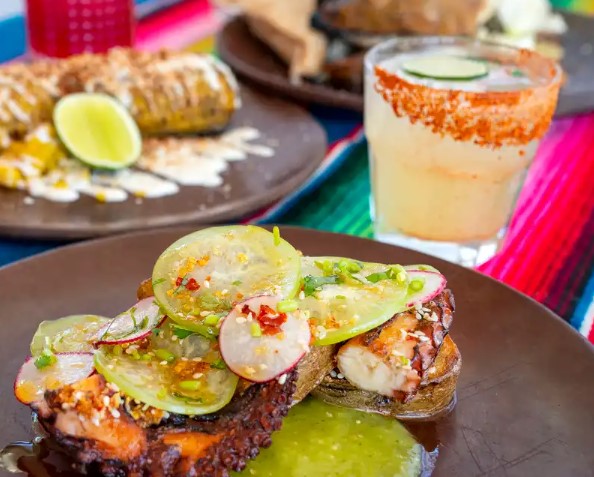

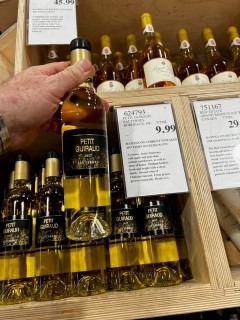
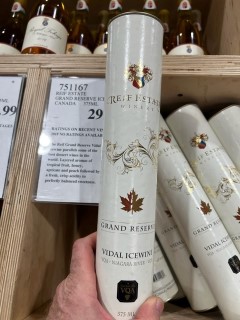
 Holiday Greetings!
Holiday Greetings! Great Sparkling wines are coming out of California, Oregon, New Mexico, Michigan, New York, and are starting to be produced in the emerging wine areas too. I have even enjoyed great Sparklers from Richard G Peterson, made in California with Pinot grapes grown from cuttings imported from Wrotham in Kent, England, originally planted by the Romans…if you see any bottles, pounce and enjoy!!! (His daughter, cult winemaker Heidi Peterson Barrett learned a thing or two about winemaking around him…)
Great Sparkling wines are coming out of California, Oregon, New Mexico, Michigan, New York, and are starting to be produced in the emerging wine areas too. I have even enjoyed great Sparklers from Richard G Peterson, made in California with Pinot grapes grown from cuttings imported from Wrotham in Kent, England, originally planted by the Romans…if you see any bottles, pounce and enjoy!!! (His daughter, cult winemaker Heidi Peterson Barrett learned a thing or two about winemaking around him…) 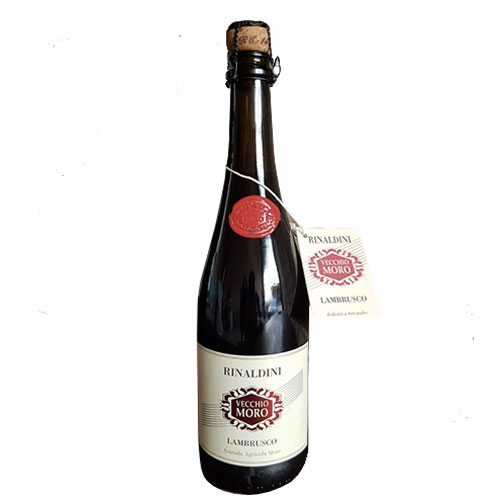
 If you want to show off, pick a beautiful red wine that is unknown to most Americans. Sicily has some stunning wines that show the velvety, delicate character of great Burgundy but with the plusher fruit levels of those new world Pinot. I love Palari’s Faro Red blend that over-delivers for the price, and several other producers make stunning wines with the Nerello Mascelese grape that aren’t too rich or tannic…look for “Etna Rosso”.
If you want to show off, pick a beautiful red wine that is unknown to most Americans. Sicily has some stunning wines that show the velvety, delicate character of great Burgundy but with the plusher fruit levels of those new world Pinot. I love Palari’s Faro Red blend that over-delivers for the price, and several other producers make stunning wines with the Nerello Mascelese grape that aren’t too rich or tannic…look for “Etna Rosso”. Personally, I love these blends, and I’m bringing 3 Liter bottles from L’Aventure in Paso Robles, of their “Optimus” and their “Cote a Cote” Red Blends. Owner/winemaker Stephan Asseo, crafts his French inspired beauties with Central Coast grapes and no rules on blending to hold him back from his vision.
Personally, I love these blends, and I’m bringing 3 Liter bottles from L’Aventure in Paso Robles, of their “Optimus” and their “Cote a Cote” Red Blends. Owner/winemaker Stephan Asseo, crafts his French inspired beauties with Central Coast grapes and no rules on blending to hold him back from his vision. In Arizona, Callaghan Vineyards in Elgin, Caduceus Cellars in Jerome, Laramita Cellars in Willcox, and Dos Cabezas WineWorks out of Sonoita, Page Spring Cellars and Pillsbury, are among the producers making very good, but relatively small production, food-friendly reds and whites and even Sparkling Whites and Rose!
In Arizona, Callaghan Vineyards in Elgin, Caduceus Cellars in Jerome, Laramita Cellars in Willcox, and Dos Cabezas WineWorks out of Sonoita, Page Spring Cellars and Pillsbury, are among the producers making very good, but relatively small production, food-friendly reds and whites and even Sparkling Whites and Rose!
